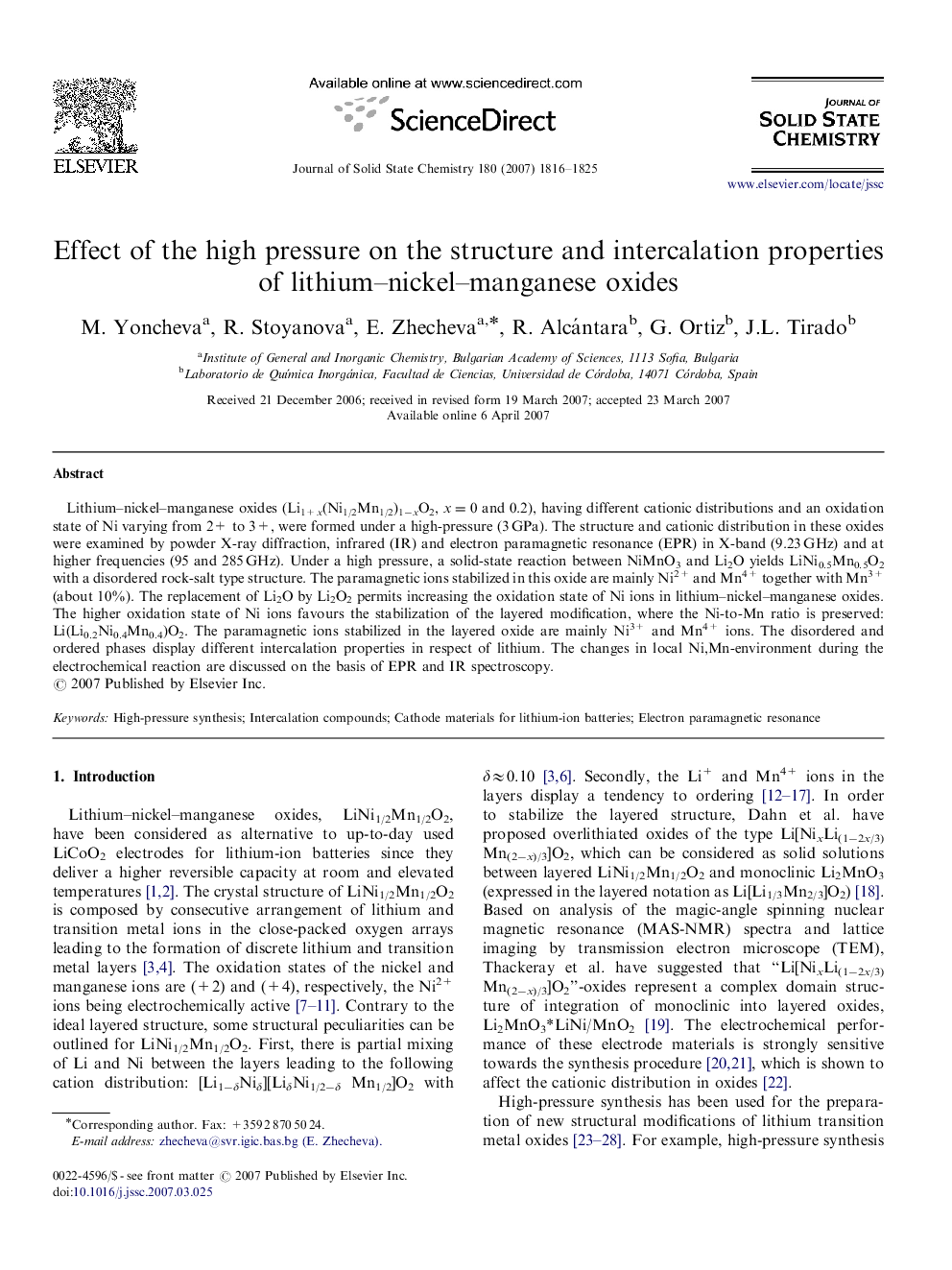| Article ID | Journal | Published Year | Pages | File Type |
|---|---|---|---|---|
| 1332624 | Journal of Solid State Chemistry | 2007 | 10 Pages |
Lithium–nickel–manganese oxides (Li1+x(Ni1/2Mn1/2)1−xO2, x=0 and 0.2), having different cationic distributions and an oxidation state of Ni varying from 2+ to 3+, were formed under a high-pressure (3 GPa). The structure and cationic distribution in these oxides were examined by powder X-ray diffraction, infrared (IR) and electron paramagnetic resonance (EPR) in X-band (9.23 GHz) and at higher frequencies (95 and 285 GHz). Under a high pressure, a solid-state reaction between NiMnO3 and Li2O yields LiNi0.5Mn0.5O2 with a disordered rock-salt type structure. The paramagnetic ions stabilized in this oxide are mainly Ni2+ and Mn4+ together with Mn3+ (about 10%). The replacement of Li2O by Li2O2 permits increasing the oxidation state of Ni ions in lithium–nickel–manganese oxides. The higher oxidation state of Ni ions favours the stabilization of the layered modification, where the Ni-to-Mn ratio is preserved: Li(Li0.2Ni0.4Mn0.4)O2. The paramagnetic ions stabilized in the layered oxide are mainly Ni3+ and Mn4+ ions. The disordered and ordered phases display different intercalation properties in respect of lithium. The changes in local Ni,Mn-environment during the electrochemical reaction are discussed on the basis of EPR and IR spectroscopy.
Graphical abstractLithium–nickel–manganese oxides (Li1+x(Ni1/2Mn1/2)1−xO2, x=0 and 0.2), having different cationic distributions and an oxidation states of Ni varying from 2+ to 3+, were formed under a high-pressure (3 GPa).Figure optionsDownload full-size imageDownload as PowerPoint slide
